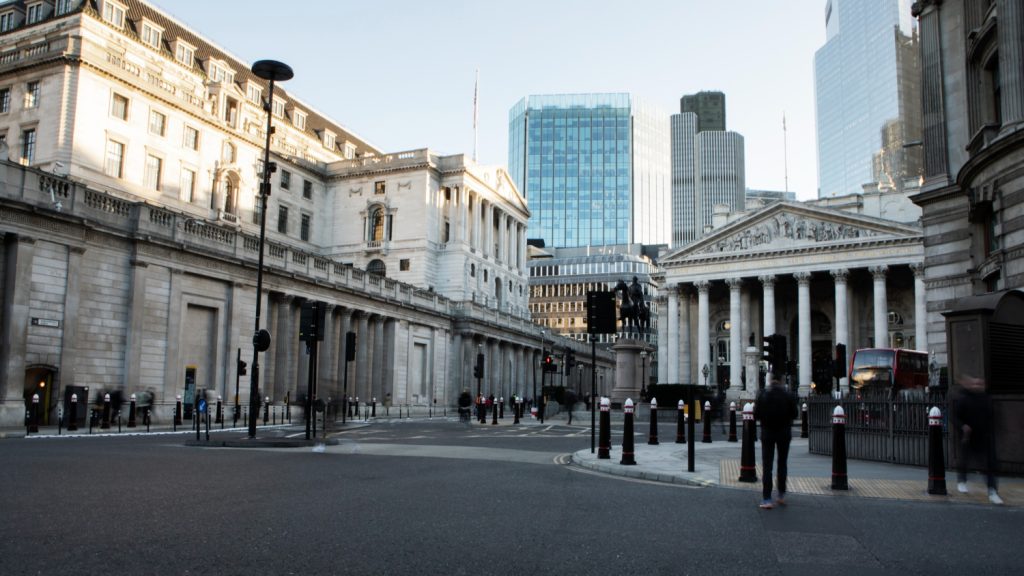About Saga Platinum Credit Card

Once upon a time, the Saga Platinum Credit Card, which was tucked away in the wallets of astute British tourists over fifty, offered much more than just purchasing power—it offered peace of mind. This card was more than just a way to pay; it was a reliable travel companion for travelers who had earned their freedom and understood the importance of hassle-free travel because of its surprisingly low cost and incredibly transparent terms. It stood by during every foreign exchange, calmly avoiding currency fees and providing up to 55 days of interest-free cash withdrawals, much like a well-trained guide. Despite its lack of ostentation, it was incredibly successful.
Many people found that the Saga Platinum card not only met their needs, but also foresaw them. It provided what few others dared to offer: customized convenience for a particular generation that is frequently ignored by mainstream financial products by fusing demographic-focused design with purposeful benefits. It immediately became a mainstay among retirees who didn’t want to have to choose between security and flexibility because of its attractive name, competitive annual percentage rate (APR) of 11.9%, and lack of annual fee. Sadly, when word leaked out in 2019 that it was closing, that peaceful rhythm was upended. For many, this was like being quietly shown the door of a private club they had helped create.
The benefits of the card were especially helpful when it came to post-retirement finances, where every percentage point has greater significance. However, its absence caused misunderstanding and dissatisfaction. Customers who had based their travel schedules and financial practices on the predictability and savings the card once promised were particularly affected by the abrupt announcement. Many were left looking for a good substitute, but none of them could match the Saga Platinum’s well-rounded appeal.
Anecdotal complaints abound in financial forums and social media threads during this shift. One user wrote, “I’ve used it for every trip since 2012, and it never let me down.” These were brand loyalists, shaped by years of consistent service and discreet financial support, not just credit card holders. Together with a customer service line that never felt robotic, the brand’s distinctively personal approach solidified an emotional bond that fintech startups frequently find difficult to match.
Digital-first banks with slick branding, AI-powered tools, and mobile-first interfaces have emerged during the last ten years. Few, however, have been able to replicate the serene assurance that Saga gave its users. Its closure serves as a warning that legacy value can be sacrificed in the rush for innovation. The Platinum card was independent of glitzy app interfaces and gamified rewards. It depended on being incredibly dependable, incredibly transparent, and incredibly simple to use.
Saga had produced a unique offering in the credit industry—a financial product that actually fit with the rhythms and lifestyles of its customers—by utilizing steady client trust and a laser-like service model. Even though the product was eventually discontinued, its legacy is still incredibly educational. The Saga Platinum story provides a model for future financial brands that target specialized markets: put purpose above performance. Design not just efficiently, but with empathy.
There will be a great chance to review this model in the upcoming years as the financial services sector continues to shift toward digital-only solutions. A new generation of exceptionally inventive products—ones that are not only intelligent but also emotionally impactful—may emerge by fusing the technology of today with the attention to detail of yesterday. Products that improve lives in addition to fitting them, particularly for people who have earned a little more comfort along the way.
| Feature | Description |
|---|---|
| Card Name | Saga Platinum Credit Card |
| Provider | Allied Irish Banks (AIB), via Saga |
| Eligibility | UK residents aged 50+ |
| Notable Benefits | No foreign currency fees, 0% interest on cash withdrawals abroad (55 days) |
| Representative APR | 11.9% |
| Annual Fee | £0 |
| Closure Date | March 2019 |
| Primary Users | Retirees, travellers, over-50s |
| Replacement Option | None officially introduced |
Latest
List of Top Banks in United Kingdom

Banks are still more than just organizations in the UK’s financial system; they are deeply ingrained in the cadence of everyday existence. Beneath everything from individual savings to international trade, they function quietly but effectively, much like the dependable hum of a city’s underground. British banking has undergone a remarkable transformation in the last ten years, fusing surprisingly flexible, tech-forward products with centuries-old foundations. The leading UK banks of today do more than just hold money; they influence how people make plans for the future, how companies expand internationally, and how countries handle financial instability.
The top banks in the UK have clearly responded to shifting consumer behavior by utilizing both cutting-edge technologies and legacy trust. Despite their continued dominance, the “Big Four”—HSBC, Barclays, Lloyds, and NatWest—have significantly modernized through the use of real-time apps, biometric security, and predictive analytics. These institutions are incredibly adaptable and now cater to both traditional and digital natives. With a laser-like focus, challenger banks like Monzo and Starling have also surfaced alongside them, providing simplified experiences that resemble tech platforms more than financial institutions. This hybrid model—where tradition meets transformation—has never been more pertinent in light of the uncertain global environment and growing expectations for digital technology.
Millions of people relied on banks like Nationwide and Santander UK during the pandemic, which was a stressful time for many financial institutions. They became comforting figures in otherwise uneasy homes by quickly enacting mortgage holidays, providing credit support, and providing low-interest products. This was a profoundly human reaction, based on empathy and prompt action, rather than merely a practical one. The importance of having a very dependable bank became very evident for families looking for stability.
Meanwhile, HSBC and Barclays have pushed the envelope in international finance. HSBC invented green bonds to aid in environmental transitions, while Barclays adopted AI for fraud detection. The carbon impact of HSBC’s asset portfolio has decreased dramatically over the last 12 months thanks to its sustainability-linked investment strategies, demonstrating a forward-thinking change that aligns financial objectives with global responsibility. Such actions are not only highly inventive but also ethically required in the context of climate finance.
Virgin Money and TSB are still making targeted, quiet progress in supporting SMEs and community banking. Users who are managing stress related to money have responded favorably to Virgin Money’s incorporation of wellness tools into its banking app, which tracks both financial and emotional well-being. It’s an emotionally rich feature that’s surprisingly inexpensive. It transforms a bank into a confidant instead of a calculator.
Convenience has been redefined by digital-first banks like Monzo and Starling. They have gained enormous popularity, especially among younger generations and independent contractors, thanks to features like automated savings accounts, fee-free international use, and instant payment notifications. You can now do what used to require a trip to the branch while you wait for a train. They have transformed banking from a chore to a tool that is effortless yet incredibly effective by cutting down on time, friction, and complexity.
The leading UK banks have transformed disruption into opportunity through strategic alliances and ongoing improvement. They have not only future-proofed their operations but also improved the customer experience in ways that are noticeably better than they were ten years ago by embracing open banking principles, investing in cybersecurity, and integrating fintech capabilities. This has resulted in more intelligent, quicker, and transparent financial journeys for both first-time homeowners and medium-sized businesses.
UK banks will have to find a balance between automation and empathy in the years to come as AI continues to add deeper insights to financial systems. They have the opportunity to develop into even more exceptional financial partners who are not only effective but also emotionally intelligent by upholding trust while providing highly customized digital services. Systems that are much faster, incredibly robust, and infinitely adaptable will be necessary for the road ahead. Thankfully, the top banks in the UK appear to be more than capable of handling the challenge based on the foundations they have already established.
| Bank Name | Headquarters | Founded | Total Assets (GBP) | Key Services | Website |
|---|---|---|---|---|---|
| HSBC Holdings | London, England | 1865 | £2.9 Trillion | Global banking, retail, commercial, wealth management | hsbc.co.uk |
| Barclays | London, England | 1690 | £1.5 Trillion | Retail, investment, and corporate banking | barclays.co.uk |
| Lloyds Banking Group | Edinburgh, Scotland | 2009 | £1.1 Trillion | Retail, insurance, wealth, and business services | lloydsbank.com |
| NatWest Group | Edinburgh, Scotland | 1727 | £925 Billion | Retail, SME banking, insurance | natwest.com |
| Standard Chartered | London, England | 1969 | £720 Billion | Emerging market banking, trade finance | sc.com |
| Santander UK | London, England | 2010 | £275 Billion | Retail, mortgage lending, personal finance | santander.co.uk |
| Nationwide Building Society | Swindon, England | 1884 | £270 Billion | Mortgages, savings, current accounts | nationwide.co.uk |
| Monzo Bank | London, England | 2015 | £11.2 Billion | Mobile-first banking, budgeting tools | monzo.com |
| Starling Bank | London, England | 2014 | £14.7 Billion | Digital banking, SME lending | starlingbank.com |
| Virgin Money UK | Glasgow, Scotland | 2015 | £91.7 Billion | Retail and small business banking | virginmoney.com |
Top Financial Institutions in UK

Financial institutions in the UK’s economic ecosystem work similarly to the neurons of the country’s economy, continuously sending value, trust, and insight through a network of interconnected links. The UK is still a very successful financial center, from the giants gathered around London’s Canary Wharf to up-and-coming fintechs upending the status quo in Leeds and Bristol. These organizations are the dynamic designers of the nation’s economic infrastructure, not just suppliers of services.
Through the integration of cloud computing capabilities, AI-powered fraud systems, and increasingly sophisticated cybersecurity protocols, the industry has preserved customer confidence while drastically cutting down on operational delays. While more recent entrants like Starling and Monzo offer digital platforms that feel more like smart assistants than traditional banks, banks like HSBC and Lloyds have adapted their heritage with remarkable clarity. Diversification, innovation, and a persistent dedication to customer trust have significantly increased the sector’s resilience, which has been especially evident during global disruptions.
Many of these institutions have transformed from heritage brands into highly adaptable platforms that anticipate rather than respond over the last ten years. For instance, NatWest has started using AI to evaluate credit, and Lloyds uses behavioral data to assist customers in real-time management of their spending habits. Insurers such as Aviva are using predictive modeling to optimize retirement products in the face of a rapidly aging population, providing incredibly effective financial peace of mind.
During the pandemic, which put the world’s economic systems to the test, UK institutions acted quickly and decisively. They served as financial first responders by expediting digital transitions and simplifying emergency lending. They strengthened public trust, protected jobs, and maintained liquidity through data-driven policymaking and strategic partnerships. It took years of modernizing infrastructure and fostering a strong, people-first culture for them to be able to take decisive action.
As environmental accountability gains prominence in the upcoming years, UK institutions are coordinating their mission and impact. Co-operative Bank’s long-standing ethical investment policies and HSBC’s dedication to net-zero operations provide remarkably clear examples of how finance and climate action can coexist. This move toward sustainable banking is especially advantageous for consumers who value transparency or for early-stage startups looking for green investment.
The next chapter of global finance is being shaped by UK financial institutions’ agile thinking and deeply ingrained values. They are rewriting the rules, not just adjusting to them. And in doing so, they keep demonstrating that, when done with honesty and vision, finance is about more than just managing money; it’s about giving people the tools they need to dream, build, and prosper.
| Institution Name | Headquarters | Type | Specialisation & Services | Website |
|---|---|---|---|---|
| HSBC Holdings | London, England | Universal Bank | Retail, corporate, global banking, wealth management | hsbc.co.uk |
| Barclays | London, England | Investment & Retail Bank | Retail banking, corporate finance, wealth, and investment banking | barclays.co.uk |
| Lloyds Banking Group | Edinburgh, Scotland | Commercial & Retail Bank | Retail banking, insurance, pensions, and asset finance | lloydsbank.com |
| NatWest Group | Edinburgh, Scotland | Commercial & Retail Bank | Retail, business, and private banking | natwest.com |
| Standard Chartered | London, England | International Bank | Trade finance, global banking, emerging markets | sc.com |
| Nationwide Building Society | Swindon, England | Mutual Financial Institution | Mortgages, savings, current accounts | nationwide.co.uk |
| Aviva | London, England | Insurance & Asset Management | Life insurance, pensions, general insurance, and investment products | aviva.co.uk |
| Legal & General | London, England | Investment & Insurance | Life insurance, pensions, retirement income, asset management | legalandgeneral.com |
| Starling Bank | London, England | Digital Challenger Bank | App-based banking, business accounts, savings tools | starlingbank.com |
| Monzo Bank | London, England | Digital Challenger Bank | Current accounts, budgeting features, savings, and international use | monzo.com |
Top Corporate Companies in the United Kingdom

The UK is still home to a remarkably strong group of corporate behemoths in a nation renowned for its long history of trade, ground-breaking invention, and economic tenacity. These businesses are ingrained in the veins of international trade and are not limited to tech hubs in Manchester or glass towers in Canary Wharf. From fintech and consumer goods to clean energy and pharmaceuticals, the UK’s business environment has developed into a remarkably efficient force for advancement, providing insights into adaptability and resilience.
The leading corporate firms in the UK have become especially creative change agents by fusing AI-driven analytics, sustainable technologies, and strategic vision. Unilever’s dedication to traceable, ethical sourcing, Shell’s decisive shift toward renewable energy, and AstraZeneca’s quick rollout of vaccines during the pandemic demonstrate how British multinational corporations are redefining disruption rather than merely responding to it. They have evolved far more quickly than many would have thought ten years ago.
These businesses have significantly changed in recent years, going above and beyond what was previously thought. Once mainly recognized for its research in respiratory and oncology, AstraZeneca is now widely recognized for its contribution to public health response. Concurrently, Unilever has achieved remarkable success in reducing its use of plastic, fusing brand loyalty with environmental responsibility. BP’s venture into green hydrogen and HSBC’s calculated investment in digital banking tools serve as examples of how even well-established companies can confidently embrace radical change.
These industry leaders are extremely adaptable role models for startups and medium-sized businesses alike. BAE Systems and Vodafone have strategically branched out into industries like cybersecurity and digital infrastructure by establishing audacious joint ventures and purchasing specialized tech innovators. In addition to spurring growth, these measured risks have significantly increased their resilience in a changing global economy.
Through integrating Environmental, Social, and Governance (ESG) pledges into their primary objectives, these businesses are welcoming a future in which purpose, rather than just profit, will determine value. Tesco’s significantly better emissions-reduction logistics and Diageo’s water sustainability projects in developing nations are not just public relations stunts; they are blatant manifestations of corporate social responsibility. Such policies are especially advantageous to brand equity and societal welfare in light of increased investor scrutiny and environmental urgency.
| Company Name | Headquarters | Sector | CEO (as of 2025) | Website |
|---|---|---|---|---|
| AstraZeneca | Cambridge | Pharmaceuticals | Pascal Soriot | astrazeneca.com |
| Shell | London | Energy | Wael Sawan | shell.com |
| HSBC | London | Banking & Finance | Noel Quinn | hsbc.co.uk |
| Unilever | London | Consumer Goods | Hein Schumacher | unilever.com |
| BP | London | Energy | Murray Auchincloss | bp.com |
| GlaxoSmithKline (GSK) | Brentford | Pharmaceuticals | Emma Walmsley | gsk.com |
| BAE Systems | Farnborough | Defence & Aerospace | Charles Woodburn | baesystems.com |
| Vodafone | Berkshire | Telecommunications | Margherita Della Valle | vodafone.com |
| Diageo | London | Beverage | Debra Crew | diageo.com |
| Tesco | Welwyn Garden City | Retail | Ken Murphy | tesco.com |

